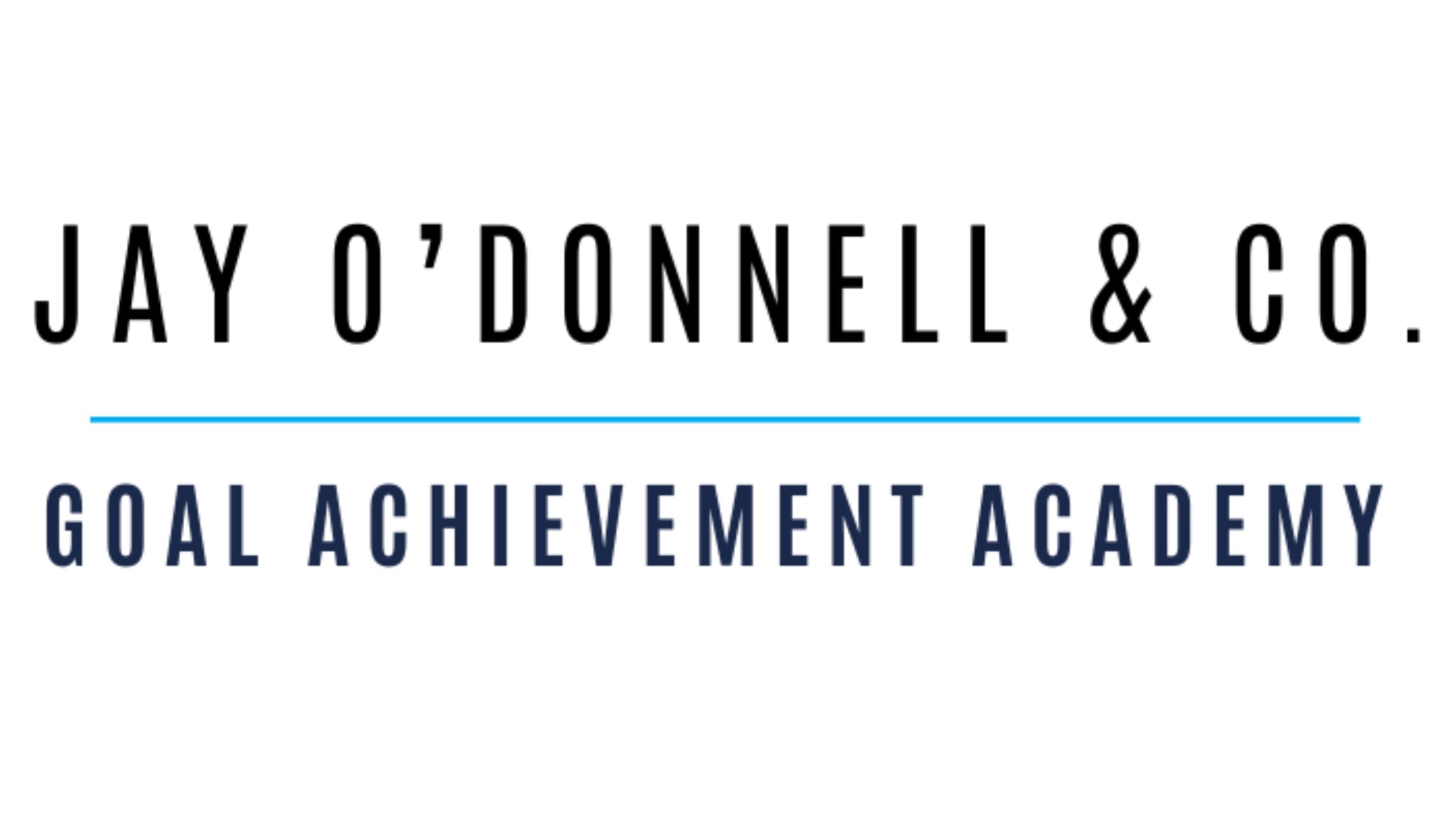Setting yearly goals is a task that should be on everyone’s annual to-do list.
There are many good reasons to turn your dreams into goals and write those goals down to give you the best odds for succeeding at them.
When we write down our goals, we effectively create a roadmap to success that empowers us to actually achieve what’s important in life.
However, some people aren’t sure where to get started with this process—and admittedly, at first, it can be a little bit tricky.
So in this post, you’re going to learn 11 steps for how to set yearly goals and achieve them like a true goal-setting pro.
You’re about to learn everything you need to know. Let’s dive into it.
1. Determine What You’d Like To Accomplish
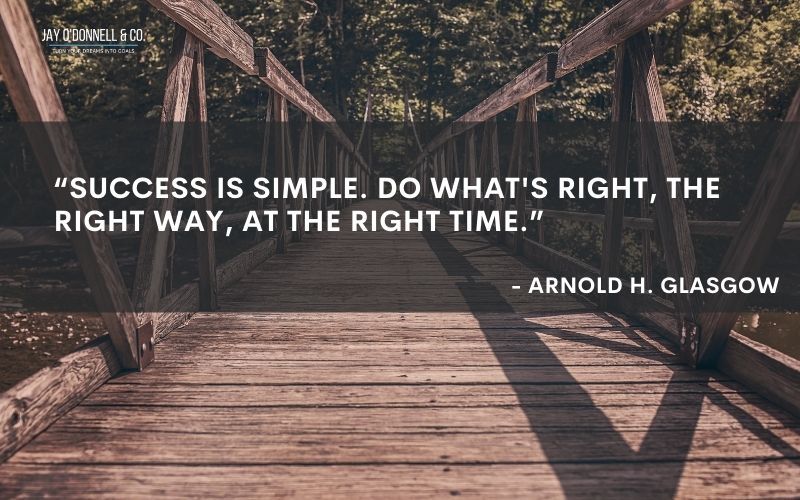
Of course, the first step to setting yearly goals is to figure out what you would actually like to accomplish.
- Is there a particular thing that you’d like to achieve?
- Is there some kind of milestone you’d like to reach?
Maybe you’d like to be making more money, have a different position at work, lose some weight, or have your kids enrolled in a new school, etc?
In the beginning of the goal-setting process, it’s really important to establish what success looks like for your individual situation.
In other words, you need to ask yourself:
What do I really want to achieve?
If you’re not quite sure how to figure out what you want, check out this post: 12 Steps To Finding Your Passion And Purpose In Life.
Defining Your Purpose
Sometimes, asking yourself what you’d like to achieve in life will lead you to a deeper question about your purpose in life.
While you don’t necessarily need to determine your life’s purpose right now to start setting productive goals, it’s definitely something that will help to give you clarity as you continue down this path of setting goals and striving to achieve them.
Create A Mission Statement
Creating a mission statement for your life can help to give you clarity and direction as you decide what goals you’d like to set.
Sometimes, figuring out your mission in life is a pretty simple process.
But for some people, this can require some introspection.
Will Smith is a great example of this. In one interview, he was quoted as saying that his life statement is to improve lives.
Anything he does must have this core inner mechanism woven throughout it. If he’s offered the opportunity to work on a project that he doesn’t believe fits into this mission statement, he says ‘no’ to it.
This is a great way to help guide you as you determine what goals you’d like to set for yourself.
2. Take A Look At Last Year’s Goals
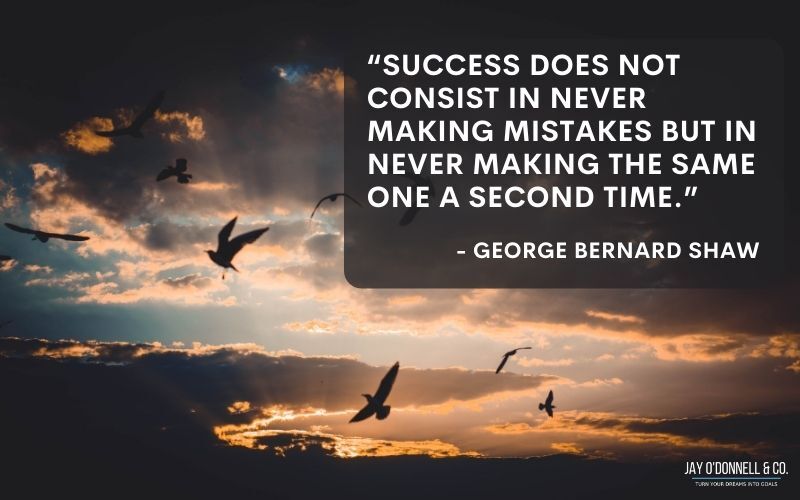
Along with determining what you’d like to accomplish in the upcoming year, taking a look at last year’s goals could help to give you some clarity on exactly what types of things you might want to focus on.
Perhaps there are some goals from last year that you’d like to continue to pursue into this year.
Or maybe you’ve already succeeded at a few of those goals, and are ready to check them off of your list.
In any case, reviewing the goals you set for yourself last year is often a great way to get started on the process of setting yearly goals for the upcoming year.
3. Decide On What Categories You’re Going To Set Goals In
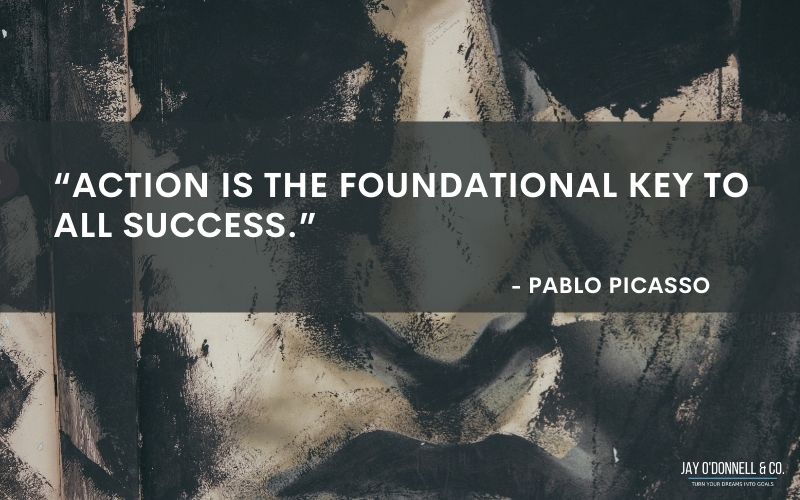
There are many different life categories that you may want to set goals in.
You may even already have one or two categories in mind.
For example, you might have some work goals, some financial goals, some personal goals, some fitness goals, etc.
However, it’s also important to look at the big picture.
Are there other goals in other categories or domains that you’d like to set for yourself this year, to help guide you as you move through the year and strive to focus on the things that matter the most?
Remember, goal setting empowers us to live an intentional life.
Therefore, it’s always a good idea to try to set goals in as many different categories as is feasibly possible without overwhelming ourselves or asking too much of ourselves. This helps us to build a well-rounded life.
Setting goals should help you to be intentional, but the process shouldn’t bog you down with so much work that you just won’t be able to get it done.
The point is to figure out where you’re headed, and what you’d like to accomplish with all of the efforts you have at your disposal to apply to each and every day.
Thankfully, there are some great examples of this that you can use as a template for creating your own category system for goals.
Goal Category Examples
For example, the Full Focus Planner has 10 ‘domains’ built into each Goal Detail page. These domains can give you some ideas for which ‘domains’ you may want to set goals in:
- Spiritual
- Intellectual
- Emotional
- Physical
- Marital
- Parental
- Social
- Vocational
- Avocational
- Financial
One of my goal setting students, as another example, chose these specific domains to set goals in on a daily, monthly, and yearly basis:
- Financial/Business
- Investments in the future
- Life purpose/legacy
- Mental development
- Physical health/wellness
- Spiritual disciplines
Mindtools.com offers a pretty good list of categories as well:
- Career
- Financial
- Education
- Family
- Artistic
- Attitude
- Physical
- Pleasure
- Public Service
Using examples like this, you can pick and choose exactly which domains or categories you’d like to set goals in, and then set yourself to the task of actually figuring out what those goals should be.
That brings us to step 4.
4. Start Writing Down Your Goals

This is where the actual goal-setting process begins.
Remember, if you want to turn your dreams into goals, and then succeed at those goals, it’s really important that you actually start writing them down.
There are actually scientific studies that have shown that people who write down their goals are much more likely to accomplish them than people who just think about them.
So writing them down is actually important!
To start with, you should just brainstorm your goals by writing them down on a sheet of paper or in a notebook.
You don’t have to get fancy with goal setting quite yet.
At first, the key is to just write down the things you want to accomplish.
For example:
“I want to lose 20 pounds by the end of the year,” could be a goal.
Or, “I want to walk one mile per day, four days per week, for the rest of the year.”
Or, “by the end of the year, I want to be earning 15% more income.”
In other words, think about what you’d like to achieve, and just start writing it down.
Don’t worry about organizing it.
That’s what we’ll do in the following steps.
Ask ‘Why’ You Want To Accomplish These Goals
Another awesome step to take here is to ask yourself ‘why’ you want to accomplish these goals, and then to write down your answers.
This can be incredibly motivating!
To learn more about determining the ‘why’ behind your goals, read this post: Purpose Goals – Answering The ‘Why’ Behind Your Goals.
Action Step
Now it’s time to take action.
Literally get yourself a piece of paper, a notebook, a journal, or a planner, and write down a list of goals that you want to achieve by the end of the year.
This is the very beginning of the physical process of writing yearly goals.
Do it now, before you even read any further.
Taking this one simple step will have a powerful effect on your success in the future.
This is a crucial habit to begin!
After you’ve written down a few goals you’d like to achieve, continue on to step five.
It’s time to start organizing everything and making a plan!
Would you like some help with the process of writing more about your future? If so, then read this post: Writing About Your Future Plans – A Complete Guide.
5. Choose A Journal Or Goal Achievement System To Use
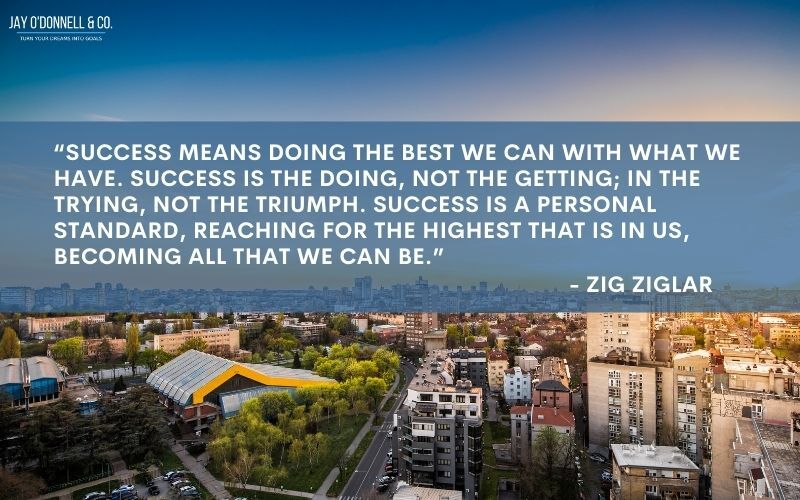
I’ve often said that it doesn’t really matter what journal, goal achievement system, or planner you use—as long as you’re writing down your goals and you have some kind of a plan for action.
Of course, some planners offer more detail than others.
And some systems offer better simplicity—and are therefore easier to use.
So it really depends on your particular life situation, personality, and goal-setting style.
People who are extremely detailed with their goals may want to opt for something more advanced, like the Full Focused Planner.
If you’re just getting started and feel a bit overwhelmed at the idea of using a complicated goal-setting planner, then you may want to opt for just a blank journal with pages that you can fill in with daily goals.
Regardless of what system you use, the whole point is to just start writing down your goals in whatever manner works the best for you.
So choose some kind of planner, journal, or system and get started, even if it’s just a blank notebook or an individual sheet of paper.
Need some help figuring out which system might best for you? Check out our goal planner resources page.
You can also download my weekly goal-setting sheet, print out a few, and give that a try for free. In addition, you can also sign up for my email list to get my free Goal-Setting Essentials Starter Kit.
Once you’ve chosen a journal, planner, or system, it’ll be time to move on to the next step.
6. Start Breaking Your Yearly Goals Down Into Monthly Milestones

This step of the process will require a bit of intentional planning and effort.
This is where the real ‘planning’ phase of setting yearly goals starts to take shape.
First, you’ll want to refine those yearly goals and start with at least one yearly goal for each category that you’re going to set goals in.
This could mean you’re going to set one or two goals for the year, or it could mean that you’re going to set five, six, seven, or maybe even more.
However many you choose to write down is fine.
Just make sure that you’re actually going to set some goals that will challenge you, help you to make progress on things that matter to you, and facilitate forward progress without overloading you.
I would also recommend that you use the SMART system to set SMART yearly goals for yourself, so that you can provide some depth and clarity into this process.
In other words, make every one of these yearly goals a SMART goal—a goal that is:
- Specific
- Measurable
- Achievable
- Relevant
- Time-sensitive
Once you’ve done this, and you have your yearly goals written out using the SMART goal system template, you’ll want to start breaking down those yearly goals into monthly milestones.
Obviously, there are 12 months in a year.
So this will basically require you to break down the effort that’ll be needed to succeed at each goal into 12 separate blocks of time.
These should be broken down in such a way that if you actually succeed at meeting those monthly milestones for all 12 months, that will add up to accomplishing your yearly goal.
Of course, this will require a bit of planning and creativity.
It’s not always incredibly obvious how to figure out the best way to accomplish a yearly goal.
This is why it’s important to really put some time into creating a plan for each one.
See, this is where the intentionality comes in.
This is also why writing down your goals is so effective.
If you only keep the goal in your mind, you’re highly unlikely to act according to a plan—and this will minimize your chances for success.
Whereas, when you write down your goals and make a cohesive, concrete plan of action, this helps you to identify exactly what you need to do.
And even if the plan isn’t perfect, you’re still going to drastically increase your odds for success.
This is why I often call goals a roadmap to success.
So break down all of those yearly goals into monthly milestones.
Once you’ve accomplished that portion of the task, you’ll be ready for the next step.
7. Start Breaking Monthly Milestones Down Into Weekly And Daily Goals/Tasks
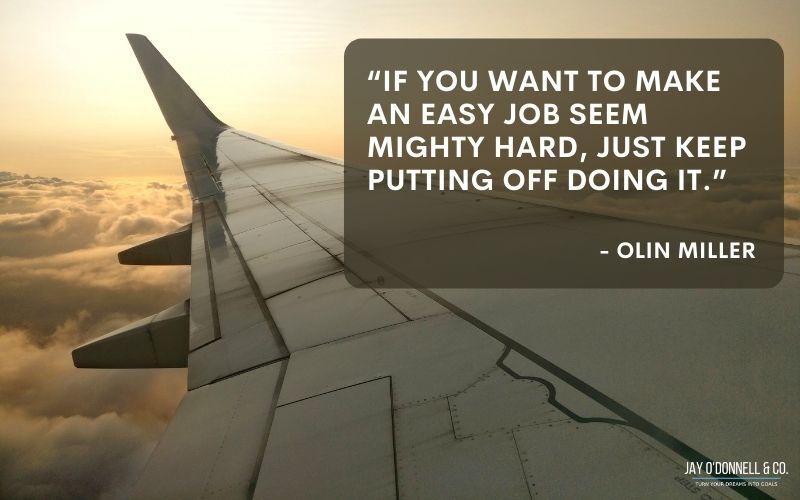
This is where the goal-setting portion of your ‘setting yearly goals’ plan will begin to take shape on a daily and weekly basis.
In each month, you have four weeks and about 30 days with which you can plan out the actions you’re going to take to help you meet those monthly milestones.
Some goals may be able to be written down in a weekly format, whereas others may require you to perform daily tasks in order to reach that monthly milestone.
Once again, this is where the planning really comes in.
The better you get at intentionally formulating a plan for each one of these milestones, and the better you get at writing those plans down in the form of daily or weekly habits or tasks, the better off you’re going to be in the long run; because you’ll literally be putting together an intentional day by day or week by week plan for how you’re going to perform all of the work necessary to get you from where you are now to where you want to be.
And all of those small daily tasks add up to big things over time.
An Example Of Breaking A Yearly Goal Down Into Daily Habits
For example:
Losing 20 pounds in a year might seem like an impossible task at first, before you create a plan to do it.
But once you break that goal down into monthly milestones, you’ll realize that you only need to lose about 1.5 pounds per month to reach that goal.
Then, when you break this down by week, you’ll quickly realize that you only need to lose about half a pound a week to really make serious ground on that goal.
Now, when you break this down by day, and you discover that there are about 3500 calories in a pound of fat, you’ll quickly realize that you only need to cut out roughly 2000 calories per week from your diet in order to meet that goal.
This could mean walking at the park for one hour each day, or cutting out about 300 calories per day from your diet (which could be the equivalent of just one cup of specialty coffee).
See, when you make a specific plan, big things that would normally seem to require a ton of effort actually get much easier, especially when you spread that effort out over time.
And this is part of the power of goal setting.
Goal setting takes large, big tasks that would normally seem impossible, and breaks them down into very manageable daily or weekly tasks that you’re perfectly capable of performing.
Then, all it takes is for us to stick with the plan to see those positive results over time.
To learn more about this portion of the process, read this post: 4 Steps To Strategic Thinking And Setting Of Goals.
8. Give Yourself Your Best Odds For Success By Prioritizing Your Goals And Working Diligently To Achieve Them

Here’s where it starts to get a little bit more difficult.
At first, your goals will probably seem pretty easy by the time you break them down into daily tasks.
In fact, you may be surprised at how manageable these goals are when you actually break them down and make a plan.
But here’s the problem.
A lot of people start out strong with goal setting, and then end up either getting lazy and dropping the plan along the way, or they just stop performing the extra steps they need to take in order to reach their goals.
See, humans are creatures of habit.
And reprogramming our habits is actually a pretty difficult thing to do.
In order to reprogram your habits, you need to consistently perform the new actions on a long-term basis for at least 30 days (though 70 days is better) in succession.
This is how you build new habits that reinforce your goals, and get into the habit of following your daily goal plans on a consistent basis.
Need some help figuring out how to do this? Check out this post: How To Make Goal Setting A Habit In Your Life.
Figuring out how to succeed at this step will give you your greatest odds for success.
It’s in your best interest to prioritize your goals if you truly want to succeed.
It’s so important to make sure that you perform these vital daily tasks every single day, so that you continue to follow your plan and get the results you want.
Discipline is truly the bridge between goals and accomplishment.
If you give up on your daily goals, slack off on them, or abandon them—guess what?
Your plan isn’t going to work, because you didn’t put in the work.
And that’s definitely not the outcome you want.
It’s in your best interest to work diligently to achieve your goals.
So stay motivated, and stick with it.
Make it a habit every single day.
Accountability Can Help With This
Scientific studies actually show that people who have accountability partners end up doing even better on their goals.
Why?
Because when you have a friend, colleague, or partner to help hold you accountable, you’ll be more likely to be reminded to do the tasks.
This can make a huge difference.
So consider finding an accountability partner to help you stay on track.
9. Keep Track Of Your Progress

Keeping track of your progress will be really important as you move forward to accomplish your goals.
For example, writing down those daily tasks, and then checking them off once they’re accomplished, is a great way to help you stay consistent and to remind yourself that you’re making progress.
Plus, checking off those items will feel really good.
This small act of follow-through will give your brain a little boost of reward chemicals, which will help you to build better habits and stay more consistent over time.
It’s also a good idea to reward yourself in other ways as you succeed at your goals.
For example, maybe every time you successfully complete all of your daily goals for a week, you can reward yourself by going out to a movie, or by doing some other fun activity that you don’t normally allow yourself to do.
It’s such a good idea to celebrate your own wins, and to keep yourself motivated while you’re on the path to getting the results you want.
10. Review, Revise, Go!

Here’s the thing about goals and plans.
They’re not always perfect. And sometimes you need to revise them.
For example, one of my students learned this the hard way.
He started writing his goals down every day (which was a good thing), but he also made the mistake of getting a bit too overzealous and setting too many goals for himself.
He ended up overloading himself with stuff that he just couldn’t realistically get done.
As a result, he got discouraged and felt like he was never going to achieve his dreams.
This made him want to give up.
See, this is one common problem that sometimes happens.
But giving up isn’t the answer.
The answer is to review what’s going wrong, revise the things that aren’t working, and then to just keep on going with a new, better, revised plan.
What my student ended up doing was this:
He ended up revising his goals and making them more focused, so that he had fewer things on his to-do list every day. But to make sure that he was still making meaningful progress, he also made sure that every single item on his to-do list was of the highest priority possible.
In other words, he just cut out the less important things that he didn’t have time for, and chose to focus instead on what was actually important.
After revising his goals like this, he figured out that he had plenty of time to get it all done—And he started checking off his goals every day, and feeling victorious in the process.
He got back to work and resumed his pursuit of success.
But now, he had a revised plan that was actually working.
He was encouraged instead of discouraged, and he was motivated instead of bogged down.
Whenever you set goals, it’s important that you take the time to review how the process is going, and to make adjustments as needed.
For some people, this might mean adding more goals—because they realized that they’ve made their goals too easy.
For some people, they may realize that they want to slightly change or adjust the plan.
Some people may find that they actually want to drop an item from their goal list to pick up something else that has turned out to be more important.
See, it’s really crucial that you stay aware of the plan—and that you review and revise as needed.
And of course, every time you make a revision, it’s time to hit the ground running and get back to work on those goals.
11. Stay Consistent, And Don’t Give Up!

And finally, this last step is maybe one of the most important steps in the entire list.
You can make the most beautiful plan, setting yearly goals that’ll get you exactly where you want to be.
And yet, if you don’t follow through, stay consistent, and refuse to give up on those goals, they’re not going to happen.
Achievement requires not only goal setting, but also hard work and follow-through.
In other words, it’s in your best interest to stay consistent.
And it’s crucial that you never give up on your goals.
Even if you mess up for a couple days and end up abandoning your goals temporarily, it’s really important to circle back around, refocus yourself, and get back to work.
A small setback can be overcome.
But giving up is the only true way to fail.
Therefore, keep this in mind.
- Never be a quitter.
- Refuse to give up on the goals that really matter to you.
- Stick with it, even when the going gets tough.
Your future self will thank you when you get to the end of that goal, and you realize that your plans worked—and now, your life is better as a result.
You’ll realize just how powerful goal setting can be, and how crucial it can be to create your destiny and manifest the life you really want for yourself.
As humans, we have a great deal of potential.
But we can only utilize that potential if we make a plan of action, execute on that plan, and stick with it.
So don’t give up.
Stay consistent, and keep on going.
Conclusion
Hopefully, these 11 steps for setting yearly goals have helped you to understand how you can start the process of setting yearly goals today—and hopefully, they help you to create a better future for yourself.
It really is important.
I’m a huge believer in setting yearly goals, and I believe that this is one of the best things that you can do to help you succeed.
You’ve got this.
I believe in you.
Now it’s time to get out there and make it happen.
Best wishes…
– Jay O’Donnell
